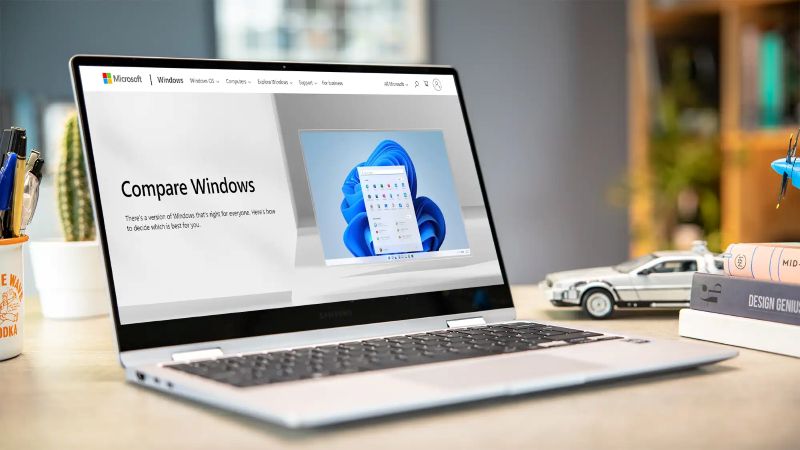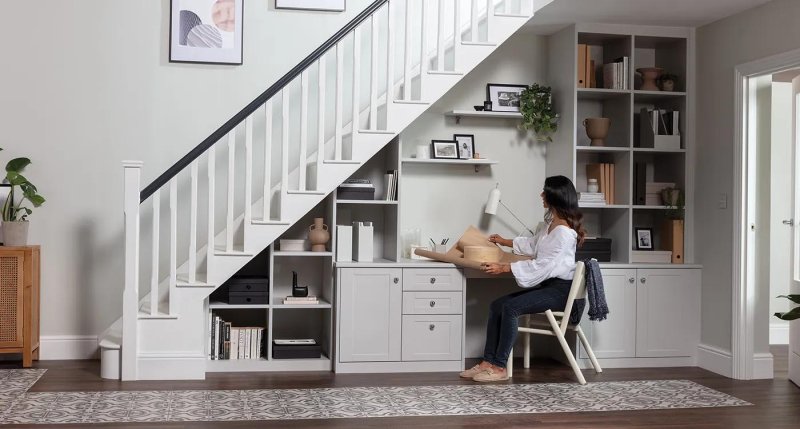
In an era of relentless consumerism, where targeted ads flood our feeds and new products constantly vie for our attention, the act of shopping can feel less like a necessity and more like a slippery slope to financial strain and cluttered homes. However, shopping doesn't have to be a reactive act driven by impulse or marketing ploys. Instead, it can be a deliberate, empowering process that saves you money, reduces waste, and brings greater satisfaction from your purchases.
"Shopping smarter" isn't about deprivation; it's about making informed choices – understanding what you truly need, getting the best value, and aligning your spending with your financial goals and values. It’s a skill that, once honed, can transform your relationship with money and possessions. Here are five simple yet powerful approaches to help you become a savvier shopper.
1. Plan Before You Buy: The Power of the Premeditated Purchase
The most fundamental and often overlooked step to smart shopping is planning. Impulse buys are the nemesis of a healthy budget and a well-organized life. Whether it’s groceries, clothing, or a new gadget, a little foresight can go a long way.
How to Implement It:
- Create a Detailed Shopping List: This isn't just for groceries. Before heading to any store or browsing online, make a specific list of what you need. For groceries, plan your meals for the week to ensure you buy only what you’ll use. For clothing, assess your wardrobe and identify specific gaps or items that need replacing.
- Conduct an Inventory Check: Before adding anything to your list, check what you already have. You might be surprised to find duplicates or forgotten items tucked away. This prevents buying products you already own or don't truly need.
- Avoid Shopping When Emotional: Studies show that people tend to spend more when they are hungry, tired, stressed, or sad. These emotional states impair judgment and can lead to irrational purchases. Shop when you're well-rested and in a calm state of mind.
- Stick to Your List: The list is your guide. View it as a commitment to yourself. While it's okay to deviate for a truly exceptional deal on something you legitimately need in the near future (like a non-perishable staple), resist the urge to add "just one more thing" not on your list. This discipline is crucial.
Benefits: Planning reduces impulse spending, saves time by making your shopping trips more efficient, minimizes waste (especially with groceries), and ensures your purchases genuinely serve a purpose.
2. Research and Compare: Knowledge is Your Greatest Discount
In today’s information-rich world, comparison shopping has never been easier. With a few clicks, you can compare prices, read reviews, and assess product quality without leaving your home. Ignorance in shopping is expensive; knowledge is your best discount.
How to Implement It:
- Utilize Online Comparison Tools: Before making a significant purchase (electronics, appliances, furniture), use websites or browser extensions that compare prices across multiple retailers. Don't assume one store is always cheaper.
- Read Reviews – Critically: Look beyond the five-star ratings. Read a range of reviews, good and bad, to get a balanced perspective on a product's performance, durability, and common issues. Pay attention to reviews that describe long-term use.
- Understand Unit Pricing: Especially for groceries and household goods, pay attention to the "unit price" (e.g., price per ounce, per sheet). Larger packages aren't always the better deal. This helps you identify the true cost-effective option.
- Check Return Policies and Warranties: A great deal isn't great if the item breaks immediately and you can't return it. Understand the store's return policy and the product's warranty before purchasing.
- Be Patient for Sales: Unless it's an urgent necessity, wait for sales events (seasonal clearances, Black Friday, end-of-season discounts). Sign up for store newsletters (using a dedicated email to avoid inbox clutter) to be notified of upcoming promotions.
Benefits: Research ensures you get the best value for your money, avoid inferior products, and make informed choices that stand the test of time, reducing the likelihood of buyer's remorse.
3. Master the Art of Budgeting: Your Financial GPS
A budget isn't a straitjacket; it's a map. It helps you understand where your money is going, identify areas for improvement, and set spending limits that align with your financial goals. Without a clear picture of your income and expenses, smart shopping remains largely hypothetical.
How to Implement It:
- Create a Realistic Budget: Start by tracking your income and all your expenses for a month or two. Categorize your spending (e.g., groceries, utilities, entertainment, clothing). Then, allocate specific amounts to each category based on your income and financial objectives. Many use rules like the "50/30/20 rule" (50% for needs, 30% for wants, 20% for savings/debt repayment).
- Distinguish Needs vs. Wants: This is a crucial skill. A "need" is something essential for survival or well-being (food, shelter, basic clothing, transportation to work). A "want" is anything else (a designer bag, the latest smartphone upgrade, dining out frequently). Before any non-essential purchase, ask yourself: "Is this a need or a want? Can I truly afford this want without compromising my savings or essential needs?"
- Track Your Spending Diligently: Use a budgeting app (like Mint, YNAB, or Simplifi), a spreadsheet, or even a simple notebook to record every expense. This ongoing awareness is critical for staying within your budget and identifying spending leaks.
- Set Spending Limits for Categories: Instead of a vague goal to "spend less," set concrete limits. For example, "I will spend no more than $400 on groceries this month" or "My entertainment budget is $150."
- Implement a "Cool-Off" Period: For larger "want" purchases (above a certain dollar amount you define), impose a 24-hour or even 30-day waiting period. Often, the urge to buy fades, and you realize you don't need the item after all.
Benefits: Budgeting provides financial clarity, reduces stress related to money, helps you save for larger goals (like a down payment or retirement), and ensures your shopping is aligned with your overall financial health.
4. Embrace Mindful Consumption: Quality Over Quantity
Smart shopping isn't just about saving money; it's about making intentional choices that support a more sustainable and less cluttered lifestyle. This means shifting focus from accumulating many cheap items to investing in fewer, higher-quality pieces that last longer.
How to Implement It:
- Prioritize Durability and Versatility: When buying clothing, furniture, or appliances, consider their longevity. A well-made, classic piece that lasts 10 years is often cheaper in the long run than several flimsy, trendy items that need frequent replacement.
- Question Every Purchase: Before pulling out your wallet, pause and ask: "Do I truly need this? How often will I use it? Does it add value to my life? Do I have something similar already?" If the answer isn't a resounding yes, reconsider.
- Explore Second-Hand Options: For many items – books, furniture, tools, even certain clothing – buying pre-owned is an excellent way to save money and reduce environmental impact. Check thrift stores, consignment shops, online marketplaces (Facebook Marketplace, eBay), and local yard sales.
- Learn Basic Repairs: Instead of immediately replacing a broken item, see if it can be repaired. A patched pair of jeans, a fixed chair, or a mended appliance not only saves money but also fosters a sense of self-reliance and reduces waste.
- Resist Marketing Pressure: Advertisements are designed to create desire and urgency. Understand these tactics and develop a healthy skepticism. Don't be swayed by "limited-time offers" or the fear of missing out if you don't genuinely need the product.
- Focus on Experiences, Not Just Things: Redirect some of your discretionary spending towards experiences – travel, concerts, classes, or quality time with loved ones. These often provide more lasting happiness and memories than material possessions.
Benefits: Mindful consumption leads to less clutter, a reduced environmental footprint, greater appreciation for your possessions, and long-term savings by avoiding the constant cycle of buying and replacing.
5. Leverage Technology and Loyalty Programs Wisely: Your Digital Allies
In an increasingly digital world, technology offers powerful tools to enhance your smart shopping efforts. From coupon apps to cashback services, these digital aids can unlock significant savings if used strategically.
How to Implement It:
- Coupon and Cashback Apps: Download apps like Ibotta, Rakuten (formerly Ebates), or Honey. These can automatically find coupons, apply discount codes at checkout, or offer cash back on purchases. Just be sure not to buy something just to get cash back or use a coupon.
- Store Loyalty Programs: Sign up for loyalty programs at your favorite stores. They often provide exclusive discounts, points that convert to savings, and personalized offers. However, be mindful not to overspend trying to 'earn' points or reach a higher tier.
- Price Drop Alerts: Use tools like CamelCamelCamel (for Amazon) or set up Google Alerts for specific products. These notify you when an item you want goes on sale or drops to a target price.
- Utilize Digital Wallets and Banking Apps: Many banking apps offer spending insights, categorization, and budgeting tools. Using digital payment methods can also make tracking your expenses easier than handling cash.
- Student/Senior/Military Discounts: If applicable, always inquire about special discounts. Many retailers offer them, but you have to ask.
- Consolidate Email Subscriptions: While signing up for newsletters can alert you to sales, a cluttered inbox can be overwhelming. Consider using a dedicated email address for promotional subscriptions or a service that consolidates them.
Benefits: Leveraging technology and loyalty programs provides direct, tangible savings, offers personalized deals, and enhances the convenience of finding the best prices and offers.
Conclusion
Shopping smarter is an ongoing journey, not a destination. It involves cultivating self-awareness, discipline, and a willingness to learn. By consistently applying these five simple approaches – planning your purchases, researching and comparing diligently, mastering your budget, embracing mindful consumption, and wisely leveraging technology – you'll transform shopping from a potential drain on your resources into an empowering act of financial stewardship.
The ultimate goal isn't just to save a few dollars here and there, though that's a welcome bonus. It's about achieving greater financial control, reducing stress, minimizing waste, and living a life that is intentional, clutter-free, and aligned with your values. Start with one approach, practice it until it becomes a habit, and then integrate another. Your wallet, your home, and your peace of mind will thank you.







0 Comments
Post Comment
You will need to Login or Register to comment on this post!